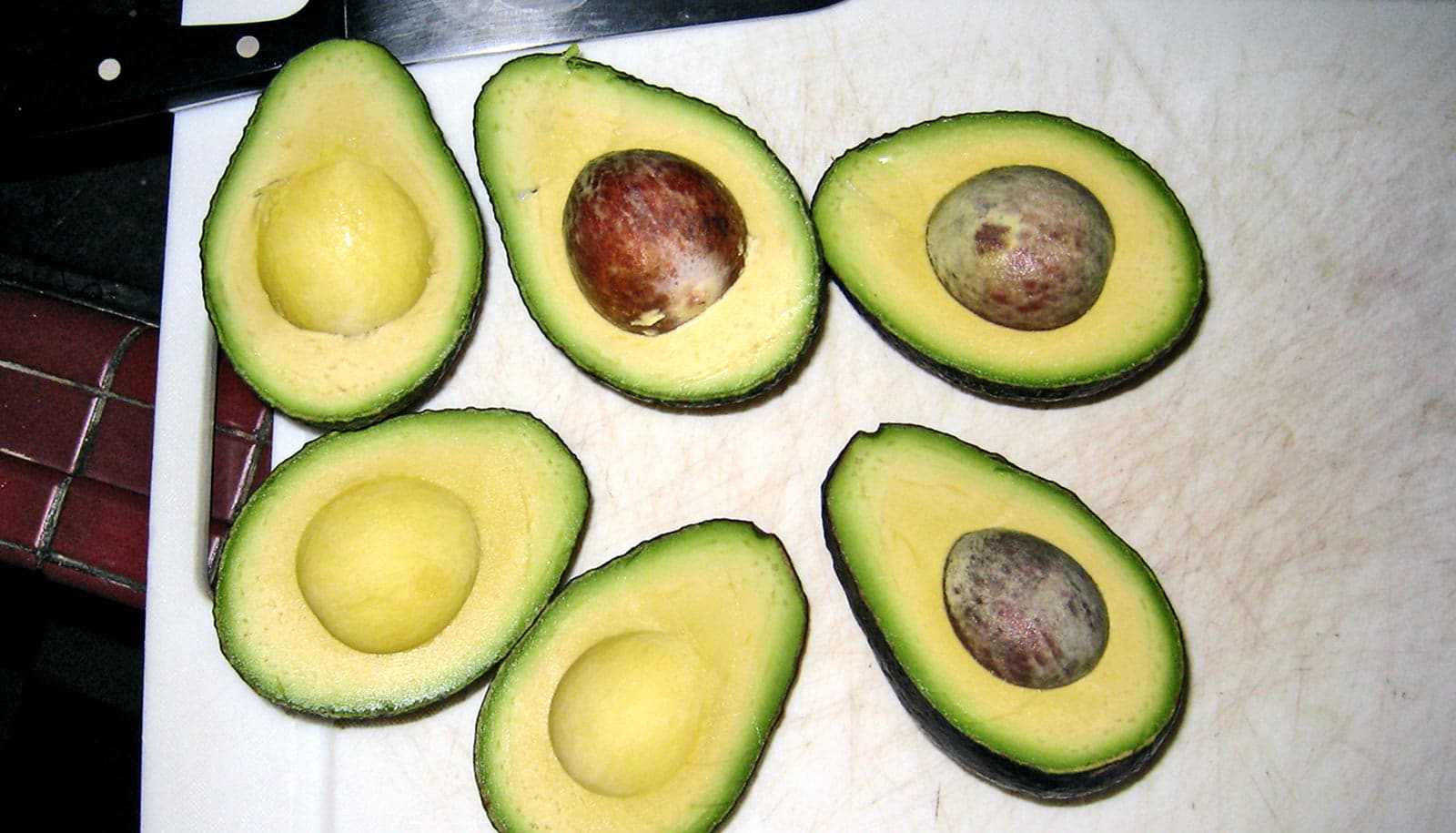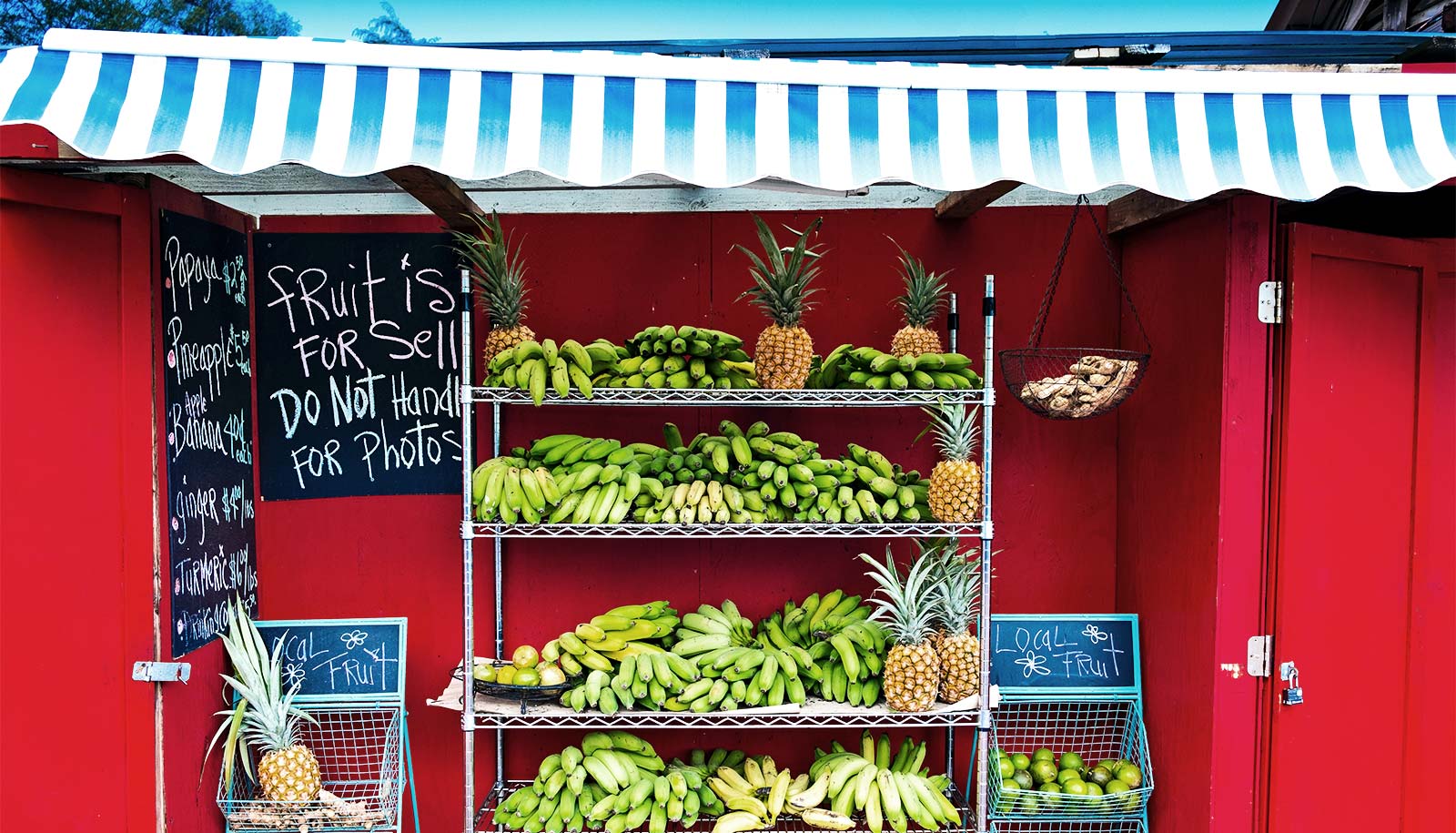Scientists have sequenced the avocado genome.
The new research sheds light on the ancient origins of the buttery fruit and lays the groundwork for future improvements in farming.
With regard to modern affairs, the study reveals for the first time that the popular Hass avocado inherited about 61% of its DNA from Mexican varieties and about 39% from Guatemalan ones. (Avocados come in many types, but Hass—first planted in the 1920s—comprises the bulk of avocados grown around the world.)
The research also provides vital reference material for learning about the function of individual avocado genes, and for using genetic engineering to boost productivity of avocado trees, improve disease resistance, and create fruit with new tastes and textures.
The growing global market for avocados was worth about $13 billion in 2017, with Mexico, the largest producer, exporting some $2.5 billion worth of the fruit that year, according to Statista, a market and consumer data provider.
Scientists sequenced not only the Hass avocado, but also avocados from Mexico, Guatemala, and the West Indies, each home to genetically distinct, native cultivars of the fruit.
“Avocado is a crop of enormous importance globally, but particularly to Mexico. Although most people will have only tasted Hass or a couple of other types, there are a huge number of great avocado varieties in the species’ Mexican center of diversity, but few people will have tried them unless they travel south of the US border,” says says Luis Herrera-Estrella, professor of plant genomics at Texas Tech University, who conceived of the study and completed much of the work at the National Laboratory of Genomics for Biodiversity (LANGEBIO) in Mexico, where he is a professor emeritus.
“These varieties are genetic resources for avocado’s future. We needed to sequence the avocado genome to make the species accessible to modern genomic-assisted breeding efforts.”
“Our study sets the stage for understanding disease resistance for all avocados,” says Victor Albert, professor of biological sciences at the University at Buffalo and a visiting professor at Nanyang Technological University in Singapore.
“If you have an interesting tree that looks like it’s good at resisting fungus, you can go in and look for genes that are particularly active in this avocado. If you can identify the genes that control resistance, and if you know where they are in the genome, you can try to change their regulation. There’s major interest in developing disease-resistant rootstock on which elite cultivars are grafted,” he says.
Avocado family history
While the avocado rose to international popularity only in the 20th century, it has a storied history as a source of sustenance in Central America and South America, where it has long been a feature of local cuisines. Hundreds of years ago, for example, Aztecs mashed up avocados to make a sauce called āhuacamolli.
Before that, in prehistoric times, megafauna like giant sloths may have eaten avocados, with their megapits. (It’s thought that these animals could have helped to disperse avocados by pooping out the seeds in distant locations, Albert says.)
The new study peers even further back into time. The researchers used genomics to investigate the family history of the avocado, known to scientists as Persea americana.
“We study the genomic past of avocado to design the future of this strategic crop for Mexico,” Herrera-Estrella says. “The long life cycle of avocado makes breeding programs difficult, so genomic tools will make it possible to create faster and more effective breeding programs for the improvement of this increasingly popular fruit.”
The avocado belongs to a relatively small group of plants called magnoliids, which diverged from other flowering plant species about 150 million years ago. The new research supports—but does not prove—the hypothesis that magnoliids, as a group, predate the two dominant lineages of flowering plants alive today, the eudicots and monocots.
If this is right, it would not mean that avocados themselves are older than eudicots and monocots, but that avocados belong to a hereditary line that split off from other flowering plants before the eudicots and monocots did.
“One of the things that we did in the paper was try to solve the issue of what is the relationship of avocados to other major flowering plants? And this turned out to be a tough question,” Albert says.
“Because magnoliids diverged from other major flowering plant groups so rapidly and so early on, at a time when other major groups were also diverging, the whole thing is totally damn mysterious. We made contributions toward finding an answer by comparing the avocado genome to the genomes of other plant species, but we did not arrive at a firm conclusion,” he says.
In a 2016 research paper, researchers estimated magnoliids to encompass about 11,000 known living species on Earth, including avocados, magnolias, and cinnamon. In comparison, they counted some 285,000 known species as eudicots and monocots.
Duplicate genes
Scientists don’t know how old the avocado is, and the new study doesn’t address this question. But the research does explore how the avocado has changed—genetically—since it became its own species, branching off from other magnoliids.
The paper shows that the avocado experienced two ancient “polyploidy” events, in which the organism’s entire genome got copied. Many of the duplicated genes were eventually deleted. But some went on to develop new and useful functions, and these genes are still in the avocado today. Among them, genes involved in regulating DNA transcription, a process critical to regulating other genes, are overrepresented.
The research also finds that avocados have leveraged a second class of copied genes—tandem duplicates—for purposes that may include manufacturing chemicals to ward off fungal attacks. Tandem duplicates are the product of isolated events in which an individual gene gets replicated by mistake during reproduction.
“In the avocado, we see a common story: Two methods of gene duplication resulting in very different functional results over deep time,” Albert says.
“In plants, genes retained from polyploidy events often have to do with big regulatory things. And genes kept from the more limited one-off duplication events often have to do with biosynthetic pathways where you’re making these chemicals—flavors, chemicals that attract insects, chemicals that fight off fungi. Plants are excellent chemists,” Herrera-Estrella says.
How we’ve changed the avocado
Having addressed some ancient mysteries of the avocado, the new study also moves forward in time to explore a modern chapter in the story of this beloved fruit: how humans have altered the species’ DNA.
Because commercial growers typically cultivate avocados by grafting branches of existing trees onto new rootstocks, today’s Hass avocados are genetically the same as the first Hass avocado planted in the 1920s. Farmers grow these modern-day Hass avocados on Hass branches grafted onto various rootstock that are well adapted for particular geographic regions.
While the Hass avocado was long thought to be a hybrid, the details of its provenance—61% Mexican, 39% Guatemalan—were not previously known. The scientists’ new map of the Hass avocado genome reveals huge chunks of contiguous DNA from each parental type, reflecting the cultivar’s recent origin.
“Immediately after hybridization, you get these giant blocks of DNA from the parent plants,” Herrera-Estrella says. “These blocks break up over many generations as you have more reproductive events that scramble the chromosomes. But we don’t see this scrambling in the Hass avocado. On chromosome 4, one whole arm appears to be Guatemalan, while the other is Mexican. We see big chunks of DNA in the Hass avocado that reflect its heritage.”
“We hope that the Mexican Government keeps supporting these types of ambitious projects that use state-of-the-art technology to provide a deep understanding of the genetics and genomics of native Mexican plants,” Herrera-Estrella says.
The research appears in the Proceedings of the National Academy of Sciences.
Additional researchers contributing to the work came from the Swedish University of Agricultural Sciences; Instituto de Ecología, A.C.; Universidad Nacional Autónoma de México; Nanyang Technological University; the University of Ottawa; VIB-UGent Center for Plant Systems Biology; Universidad de Guanajuato; the University of Florida; the University of Nevada, Reno; the Queensland Alliance for Agriculture and Food Innovation; Universitat de Barcelona; USDA-ARS Subtropical Horticulture Research Station; Universidad Autónoma Chapingo; the Natural History Museum of Denmark; and Université Paul Sabatier.
Funding for the work came from SAGARPA/CONACYT, the Governors University Research Initiative of the State of Texas, the US National Science Foundation, Horticulture Innovation Australia Ltd., and the Australian Bureau of Agricultural and Resource Economics and Sciences.
Source: University at Buffalo


